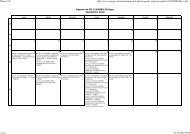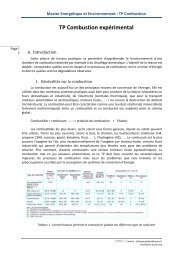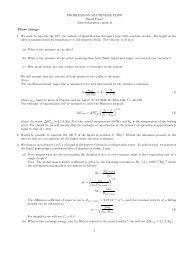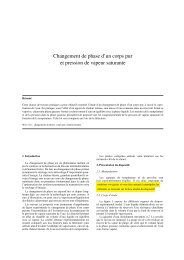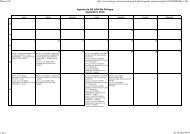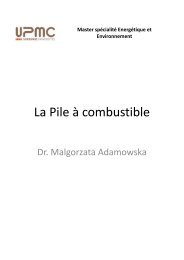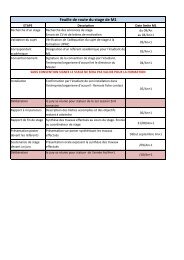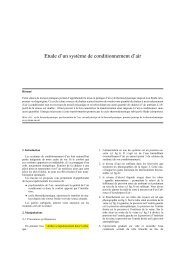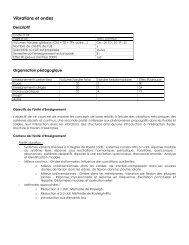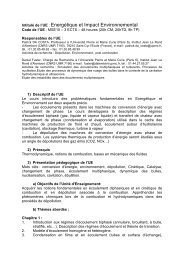CHAPITRE 1: Notions de thermodynamique - Master 2 en ...
CHAPITRE 1: Notions de thermodynamique - Master 2 en ...
CHAPITRE 1: Notions de thermodynamique - Master 2 en ...
You also want an ePaper? Increase the reach of your titles
YUMPU automatically turns print PDFs into web optimized ePapers that Google loves.
6. Conséqu<strong>en</strong>ces <strong>de</strong>s principes : étu<strong>de</strong><br />
théorique <strong>de</strong>s machines cycliques dithermes<br />
Enoncé <strong>de</strong> Thomson<br />
Gestion <strong>de</strong> l’Energie et Environnem<strong>en</strong>t<br />
Un système <strong>en</strong> contact avec une seule source ne peut, au cours d’un cycle, que recevoir<br />
du travail et fournir <strong>de</strong> la chaleur.<br />
Bilans énergétique et <strong>en</strong>tropique :<br />
1 er principe :<br />
2 nd principe :<br />
Δε<br />
= W<br />
+ Q<br />
s<br />
= 0<br />
Q<br />
ΔS = 0 = + S<br />
T<br />
c<br />
Source<br />
unique, Ts<br />
Q<br />
Syst.<br />
W<br />
Il <strong>en</strong> résulte, puisque Ts > 0, que Q < 0 et W > 0.<br />
Rq. : Si l’évolution est réversible, S c = 0, ce qui <strong>en</strong>traîne Q = 0 et W = 0.<br />
<strong>CHAPITRE</strong> 1: <strong>Notions</strong> <strong>de</strong> <strong>thermodynamique</strong><br />
25



